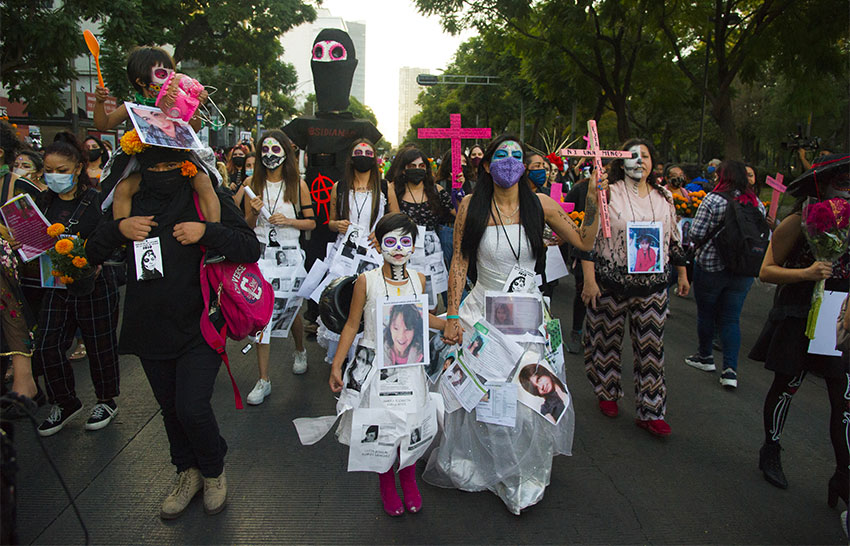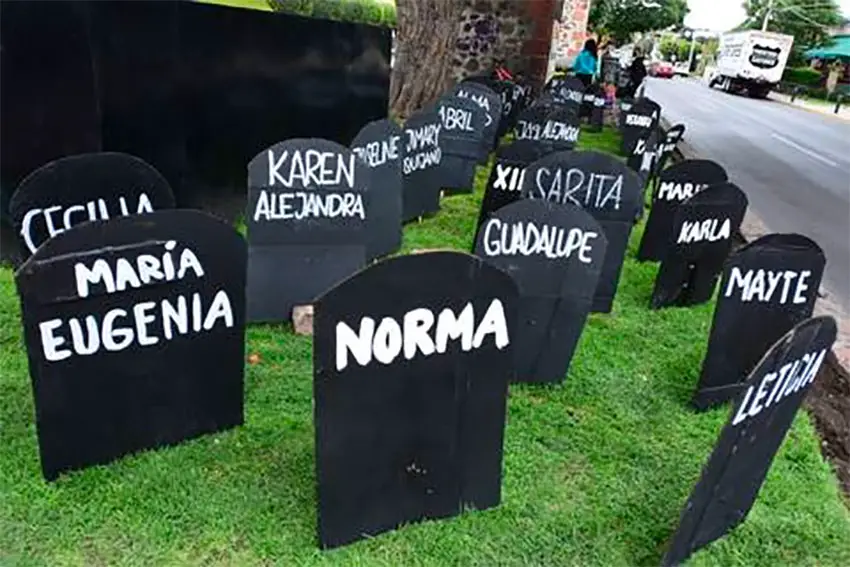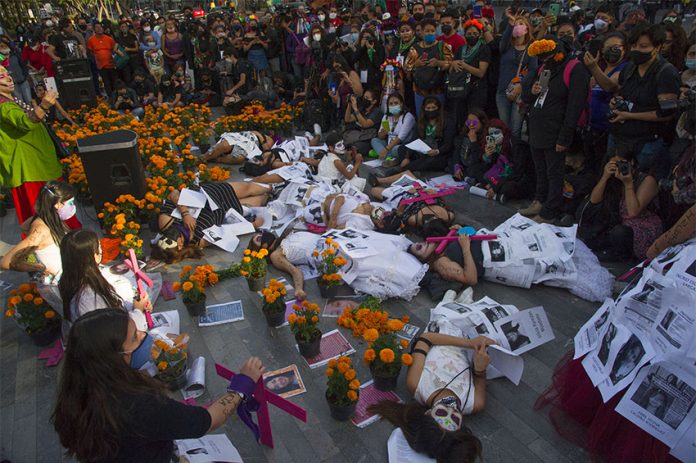In cities around the country, protesters took advantage of this year’s Day of the Dead holiday to highlight the problem of deadly violence toward women in Mexico, with traditional holiday altars calling attention to femicide, the gender-based murder of a woman or girl by a man, and violence toward women in general.
In Mexico City’s Rotunda of the Illustrious memorial in the borough of Xochomilco, a women’s group created traditional holiday altars, or ofrendas, with the classic orange marigolds, candles, and papel picado (decorative paper cutouts) — but also with pink memorial crosses and photos of women killed by men. At the Benito Juárez Hemicycle monument, about 100 women gathered to place an ofrenda to victims of femicide.
In México state, Lidia Florencio built an altar with a group of protesters in front of the Chimalhuacán District Attorney’s Office to commemorate her daughter Diana, who she said was a femicide victim.
Other altars in front of the Mexico state Attorney General’s Office and elsewhere bore signs with slogans including “Not even one more” and accused law enforcement authorities of not doing enough to protect women from gender-based violence.
Protester Carmen Sánchez, who survived having acid thrown on her, said she was also an example of “how dead the authorities are at finding justice” for victims of gender-based violence.

“There’s no progress, no follow-up,” she said. “My own case investigation and those of the rest of the women here might as well be buried in the ground because they have been halted, left to die.”
Meanwhile, in the city of Querétaro, protesters created an ofrenda in the city’s iconic Aqueduct that displayed 489 gravestones bearing the names of femicide victims in Mexico between January and October. The number represents the number of femicides recorded so far in 2020.
“We have here represented not even 5% of the actual cases of femicide in Mexico, because in the official data they don’t even count women who were disappeared,” said one activist.
The altar also featured a sign with a macabre play on words:
“En México, todos los días son Día de Muertas,” which used the Spanish feminine form of the word muerto to say, “In Mexico, every day is a Day of Dead Women.”
According to the federal numbers, the highest numbers of femicides occur in the states of Veracruz, Oaxaca, México state, Mexico City and Morelos.

In Sonora, at the steps of the state Attorney General’s Office in Hermosillo, activists set up photos of children, teenagers, and adults who were victims of femicide this year, illuminated by candles.
The various groups in the area who organized the event dubbed it a “Vigil for the Femicides.”
A member of the feminist group Marea Verde Sonora said that groups such as hers all over Mexico were organizing the vigils and altars this year in order to make visceral how much violence at the hands of men Mexican women face.
“We are very worried about the violence we see toward women and girls in our state increasing, and each time, we see forms of violence that are crueler and more intense,” she said. “But we also see more women organizing, such as the Madres Buscadoras. Clearly, the government’s efforts to protect us are not enough.”
Sources: El Universal (sp), Animal Político (sp), Diario de Querétaro (sp), El Sol de Hermosillo (sp)
